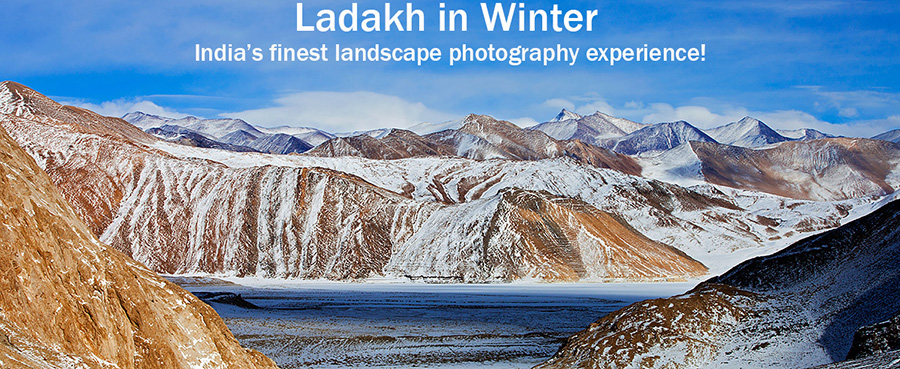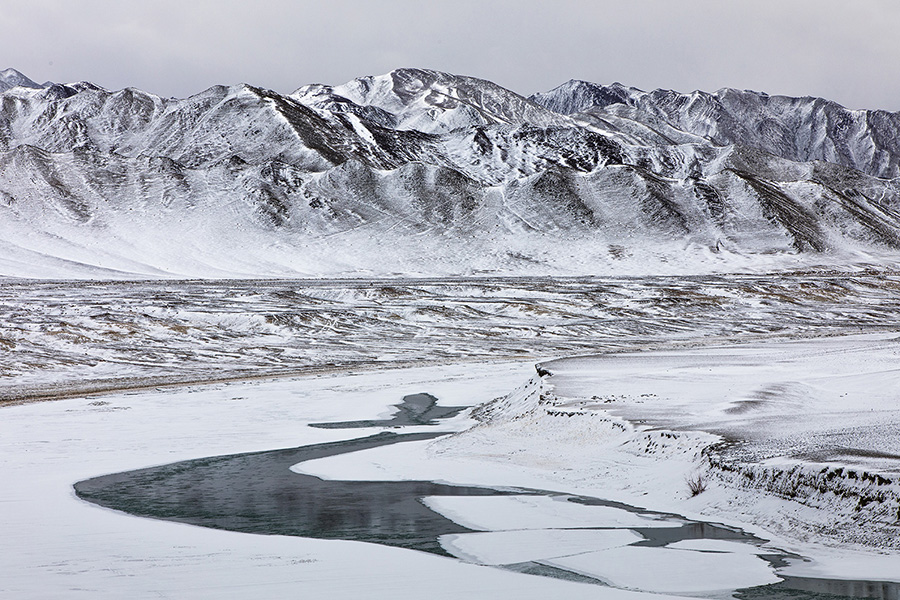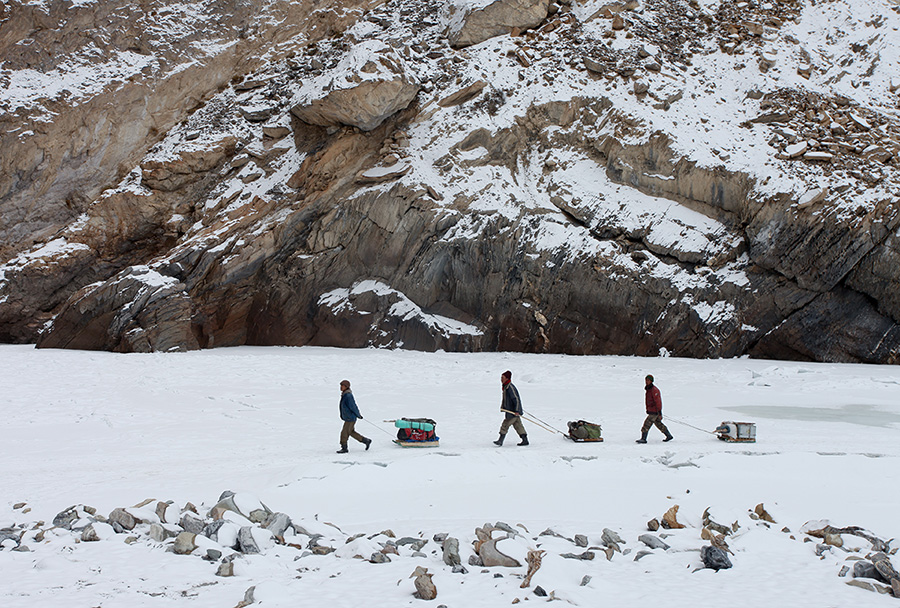
Here is a collection my images of winters in Ladakh, made over several visits in a span of about 7 years. Originally posted on medium.com – Winters in Ladakh — India’s ultimate landscape photography experience!

Powdery snow on the mountains over a frozen Pangong Tso Lake, in Ladakh during winters.
I first visited Ladakh exactly ten years ago. This was well before the region became every motor-cyclist’s ultimate destination, part of every traveller’s tick-off list and every holidaymaker’s check-in dream. In those days, tourists were in smaller numbers and Leh had more homes than guesthouses and hotels.
Every winter, we conduct a photography tour to see and capture the glorious landscapes of Ladakh. This is perhaps India’s ultimate landscape photography experience. Travel to the highlands of Ladakh in winter, when Ladakh is at its pristine best — with its snow-clad mountain landscapes, frozen lakes, resilient nomads with their herds of sheep and yaks and endless fields of snow. Explore photography on the roof of India on this mentored photography tour in a season when the earth is covered in a carpet of snow. See details and sign up today: A Snow-filled Winter in Ladakh — Photography Tour
The story is all different now. Ever since a block-buster Indian movie featured the landscapes of Ladakh eight years ago, it has become the go-to destination of hundreds of thousands of people every year. The region has been transformed from a quite mountainous escape to a bustling tourist town of German bakeries, pizza joints and mall-roads!

But all that ends when the summer season makes way to a cold frigid winter in Ladakh. After September, as the temperatures start falling rapidly, shutters are downed on the souvenir shops. Most hotels close for winter and taxi drivers stay home for a few months. But this is also the time when mountains are transformed through the magic of falling snow.
Image below, of porters drag sledges on a frozen Zanskar River, facilitating us on ‘Chadar Trek’.

It was about seven years ago that I walked on the now well-known Chadar Trek–a fascinating walk on the ice-sheets of Zanskar in winter months. We walked for nearly two weeks, crossing over from Indus Valley to the habitations in Zanskar region. We walked over thick and thin ice and sometimes had to face climbing challenges where the ice-surface was completely broken.
In the year that we were there, we noticed no more than a handful of trekkers along the path and occasional Zanskar-locals trying to get to Leh on the ice-road. It was a near-empty path on the ice.
The recent years, I have been told, have seen an explosion of people trying to get on Chadar. It has come with its share of environmental consequences, such as porters cutting away the last of the trees for firewood and too much human activity degrading the ice surface. Some travellers have complained about accumulating trash and human waste. The narrow river gorge has very little plain spaces in its banks and trekkers have even had difficulties finding ground to pitch tents in the crowded camping locations.
Looking back at all this and my own journey across the ice-river, it is obvious that I have been one of the contributors to the transformation of a region of astounding beauty into just-another-place that contributed to human need for entertainment. Being one of the early visitors to the area and having written about it and talked about it many forums, I have perhaps had my contributions to popularizing the region as well (you can see several stories by searching within this blog).
This brings me to a larger question, where I only have questions at the moment without any answers. How do we make our insatiable desire to be everywhere a sustainable one that leaves no damaging footprints? The work is on; I am, as lot of travellers are, increasingly looking forward to making our journeys environment conscious, and hoping to taking more concrete steps in the direction with progress in time.
At an altitude of 14,000 to 17,000 feet in the western parts of Ladakh lives a community of semi-nomadic herders that have lived a self-sustained life for millenniums. Despite the new found connectivity with the modern world, they have continued their wandering lifestyle that is essential for keeping their livestock well fed.
My first brush with Changpa nomads happened a decade ago, when I spotted their rebo–traditional yak-wool tents–at a distance on the long road from Manali to Leh. They had pitched tents on the famous Morey plains faraway from the road that made them look like black spots in the landscape. But smoke rising from the cow-dung stoves revealed what they are. Until that time, I had heard time and again that there are no settlements in the highlands on the difficult road from Manali to Leh. I learned few years later that they were not here just for the warm summer months, but continue to live at high altitudes even in winters, braving temperatures of -25C and lower.
Over the years, I had many encounters with Changpa people during my wanderings in the high-altitude Changthang region adjoining Tibet. A few weeks after I first saw their tents, I had an opportunity to wander in one of their settlements in a place of spell-binding beauty. The land they had chosen was carpeted with lush green grass on a kind of soft ground where you relish walking bare foot. Small streams–springs that emerged from gaps in the ground–crisscrossed the fresh landscape. When you looked up, mountains in every direction were adorned with thick cover of snow on their peaks. The skies appeared eternally blue. Yaks, cows, a few sheep that had not made their way up the mountains and a handful of donkeys grazed happily on the tender grass.



